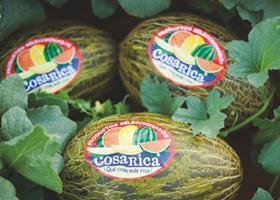
Could you give me a summary of the winter melon campaign in Spain / Europe during this campaign? How has the market behaved? What have been the most influential factors in the demand? Have you seen good prices relatively?
Jordi Martí: It has been an unusual campaign, which we can divide into three distinct parts. It started strongly in October, with the favourable weather driving demand and having a positive effect on volumes and prices. However, by the mid-season point, the fall in temperatures throughout Europe led to a slowdown in demand. Finally, at the end of the campaign we have seen a recovery in demand with low availability due to it being rainy season in Brazil so prices have bounced back.
What is the overall trend in terms of melon consumption in Europe?
JM: The consumption trend is positive. In Spain the most widely consumed variety is Piel de Sapo, prized for its high brix and excellent eating quality, while elsewhere there is a preference for other varieties such as Yellow Honeydew, Charentais and Cantaloupe – mainly because they fit better with the demands of smaller households. Although consumption is rising, demand continues to be largely driven by the weather – during periods of higher temperatures consumption increases and in cooler times it slows down.
Is watermelon consumption also increasing?
JM: Demand for watermelons has also been on an upward trajectory and has been for some time. Different varieties – white, black, seeded, seedless, striped, etc. have their own market and there is a good balance in demand across the category in general.
Seedless watermelons have carved out an important niche thanks to their ease of consumption, but they usually cost more than seeded varieties and this limits their growth. And again, smaller-sized watermelons are more popular in northern Europe because homes are generally smaller.
CMR has its own watermelon production in Brazil that provides a regular and constant supply during the winter months. These are marketed under the Cosarica brand, which includes the Cosarica Star premium segment. Both our melons and watermelons are GlobalGAP and Grasp certified, and enjoy a strong reputation among our customers who sell them under our brand and those who sell them under their own private label.
Would you say that there has been a notable improvement in the quality and availability of winter melons in recent years?
JM: There’s no doubt that being able to guarantee a regular supply of high quality melons during the winter months has satisfied a latent demand on the market. When the weather is still relatively good – in the October to December period for example – consumers are happy to continue buying melons, which after all form an integral part of the Mediterranean diet.
What impact has the emergence of new melon suppliers had on the market? Is it true that Senegal, Turkey and Morocco play an increasingly important role in the European market?
JM: Although it is true that new origins are being incorporated into the mix, their limited supply window and volume means that their impact on the market has not been that great.
How has the productive landscape in Brazil changed as a result of the drought?
JM: In actual fact, this campaign has been marred by heavy rainfall at the end of the season which has limited supplies somewhat. But if you look at the bigger picture it’s true that the drought has affected quality and availability during recent campaigns. In our case, our Brazilian subsidiary, CMR Brasil, is equipped with modern water storage and irrigated systems which support production during periods of low rainfall.
What other investments have you made in Brazil recently?
JM: In recent years we have undertaken a major investment programme to modernise our Brazilian farm as part of a strategic five-year plan that is due to run until 2020 and includes new warehouse capacity and modernising selection, packaging, storage and refrigeration systems.
Where do you see the best potential to continue to grow the melon category in the coming years?
JM: There is huge potential to develop the market for Piel de Sapo – provided growers can adapt to the requirement for smaller sizes.The summer season remains, by default, the ideal time to consume melons, but with global warming lengthening the period of mild temperatures we see excellent potential for the market to keep on growing. Our experience at CMR Brasil bears out this trend and last season we marketed 15,000 tonnes of Brazilian melons.






No comments yet